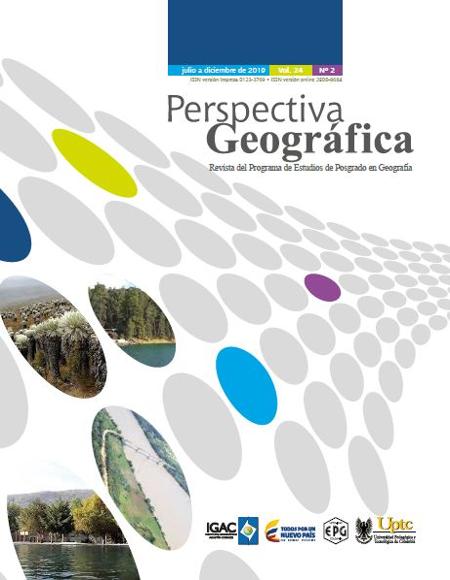The inhabited territory. Parkour, motor skills and affections in the city of Quito: parkour, motor skills and affections in the city of Quito

Abstract
This article is a reflection on corporal movement and affectivities in the city of Quito, through a deep observation and a long reflection on these issues from the perspective of parkour, a motor practice dedicated to transit urban spaces in the most fluid and effective way possible, using only the body. Through the experience of learning and practice of parkour, among the activities of the Étre Fort collective, this study explores the transformations that the exercise of this discipline entails on the city, its spatial production and its inhabited territory, at the same time that reflects on the affective elements that arise in this practice, and their role in these transformations.
Keywords
Affections, body, emotions, inhabiting, mobility, territory, urban space
References
Augé, M. (2001). Los no lugares. Espacios del anonimato. Una antropología de la sobremodernidad. Barcelona: Gedisa.
Banco Mundial. (2002). Ciudades en movimiento: revisión de la estrategia de transporte urbano del Banco Mundial. Banco Mundial.
De Certeau, M. (2007). La invención de lo cotidiano. México: Instituto Tecnológico y de Estudios Superiores de Occidente, Universidad Iberoamericana.
Delgado, M. (1999). El animal público. Barcelona: Anagrama.
Goffman, E. (1979). Relaciones en lo público: microestudios de orden público. Madrid: Alianza Editorial.
Leyden Rotawisky, J. (2013). Parkour, cuerpos que trazan heterotopías urbanas. Revista Colombiana de Antropología, 49(2), 41-61.
Leyden Rotawisky, J. (2015). El arte del extravío: corporalidades y afectos en el parkour. Revista Corpografías, 194-211.
Lindón, A. (2009). La construcción socioespacial de la ciudad: el sujeto cuerpo y el sujeto sentimiento. Revista Latinoamericana de Estudios sobre Cuerpos, Emociones y Sociedad, 1(1), 6-20.
Lindón, A. (2017). La ciudad movimiento: cotidianidades,afectividades corporizadas y redes topológicas. Inmediaciones de la Comunicación, 12(1), 107-126.
MacDougall, D. (2006). The corporeal image. Film, etnography and the senses. New Jersey: Princeton University Press.
Pile, S. (2009). Emotions and affect in recent human geography. Transactions of the Institute of British Geographers. Recuperado de http://onlinelibrary.wiley.com/doi/10.1111/j.1475- 5661.2009.00368.x/full.
Pink, S. (2006). The future of visual anthropology. Engaging the senses. Londres y Nueva York: Routledge.
Saville, S. J. (2008). Playing with fear: parkour and the mobility of emotion. Social & Cultural Geography, 9(8), 891-914. https://doi.org/10.1080/14649360802441440
Scarnatto, M., & Díaz, J. M. (2010). De peatón a traceur en una diagonal. El Parkour en la ciudad de La Plata. Nuevas prácticas, patrimonios motrices y formas de socialidad. Presentado en IV Jornadas de Investigación en Educación Corporal, Buenos Aires. Recuperado de http://www.memoria.fahce.unlp.edu.ar/library?a=d&c=eventos&d=Jev904
Schargorodsky, J. (2015). El Parkour en Avellaneda. Tensiones entre reproducción social, violencia simbólica y los Libres del Sur. Presentado en 11o Congreso Argentino y 6o Latinoamericano de Educación Física y Ciencias, Buenos Aires.
Sennett, R. (1997). Carne y Piedra. Madrid: Alianza Editorial.
Simmel, G. (2002). Las metrópolis y la vida espiritual. En Técnica y cultura: el debate alemán entre Bismarck y Weimar (pp. 55-68). Buenos Aires: Ediciones Infinito.
Tapias Hernández, C. A. (2012). La foto provocación como método: fragmentos de memorias a través de las imágenes. En Nuevas Antropologías Colombianas (pp. 66-96). Colombia: Editorial Zenú.
Thrift, N. (2008). Non representational theory. Space, politics, affect. New York: Routledge.
Vásconez Vaca, J. (2018, noviembre). Cartografía 1. Territorio emocional ganado. Recuperado 9 de noviembre de 2018, de https://www.google.com/maps/d/viewer?mid=1Sg9MvcnlNe_cRNkdflvwiAhdNXSxFs0F&fbclid=IwAR1CPl_g9QgLjTInKlBbN98SYJ1YTAWRMIv4qMf82n00-JXQfnJ102eCzZs&ll=-0.21636812061266533%2C-78.5024929&z=1